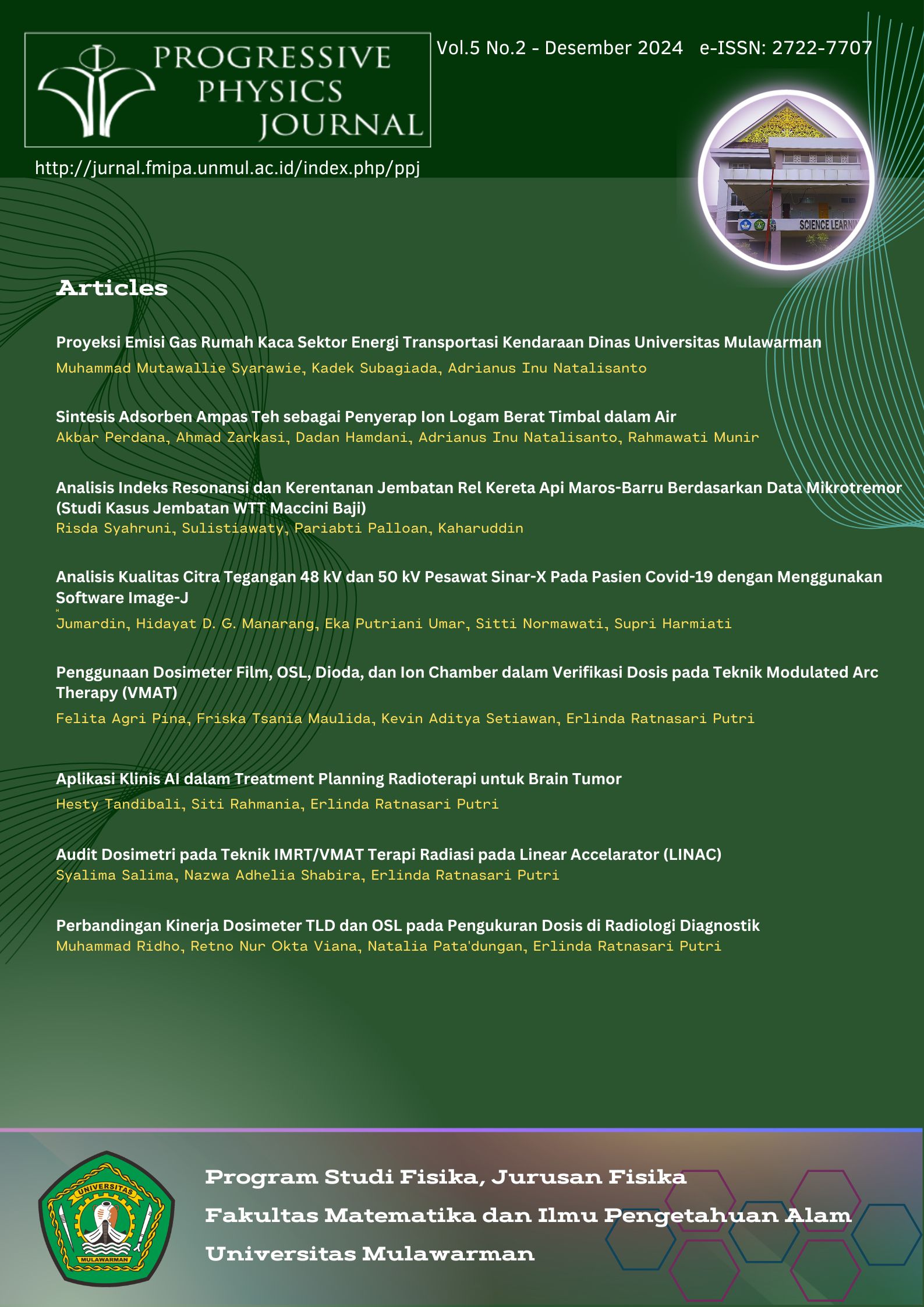Analisis Kualitas Citra Tegangan 48 kV dan 50 kV Pesawat Sinar-X Pada Pasien Covid-19 dengan Menggunakan Software Image-J
DOI:
https://doi.org/10.30872/ppj.v5i2.1433Keywords:
Covid-19;, FFT;, Histogram;, Image-J;, SNRAbstract
The process of analysing the quality of radiographic images produced by X-rays with 48 kV and 50 kV tube voltages in Covid-19 patients using ImageJ software has been carried out. The images analysed are the results of thoracic radiographic examinations using the same electric current strength in Covid-19 patients with 48 kV and 50 kV voltage variations. The image results come from converting the analogue format to digital format for further processing. The analysis method uses the FFT (Fast Fourier Transform) method and histogram analysis. Image quality was assessed based on pixel distribution, contrast and SNR (Signal to Noise Ratio) parameters. Visualisation of the distribution can be seen based on histogram analysis. In the histogram, the prominent intensity shows the pixel intensity and the peak width shows the contrast range in the image. If the histogram graph is distributed in the minimum area, the image tends to be dark and vice versa, if the histogram graph is more in the maximum area, the image tends to be bright. The results show that the 48 kV voltage has a more even distribution but has low contrast and SNR values compared to the 50 kV voltage. The results of this study provide an overview of the selection of kinetic parameters in patients and optimisation of X-ray technical parameters to obtain maximum image quality in radiographic diagnosis.







